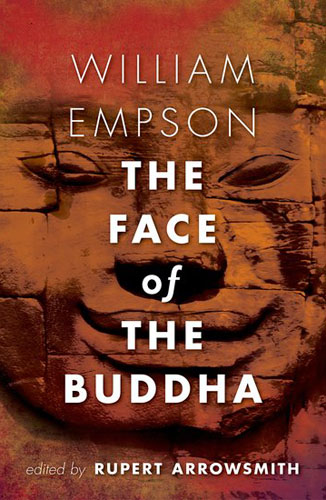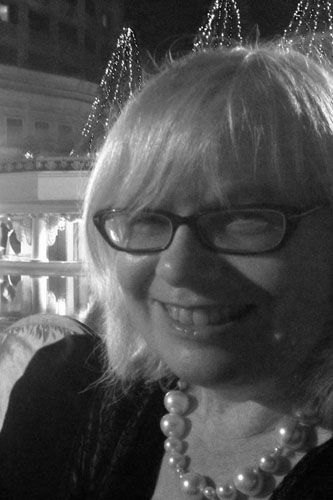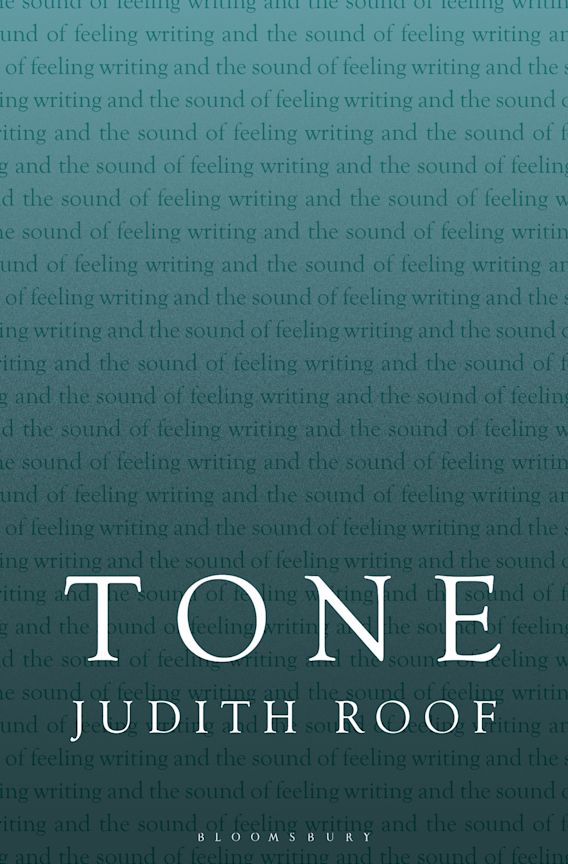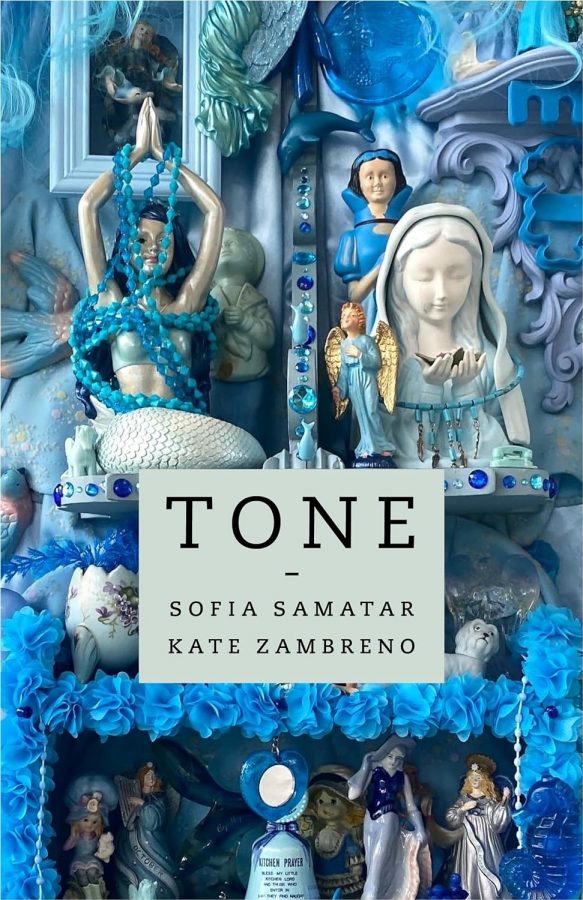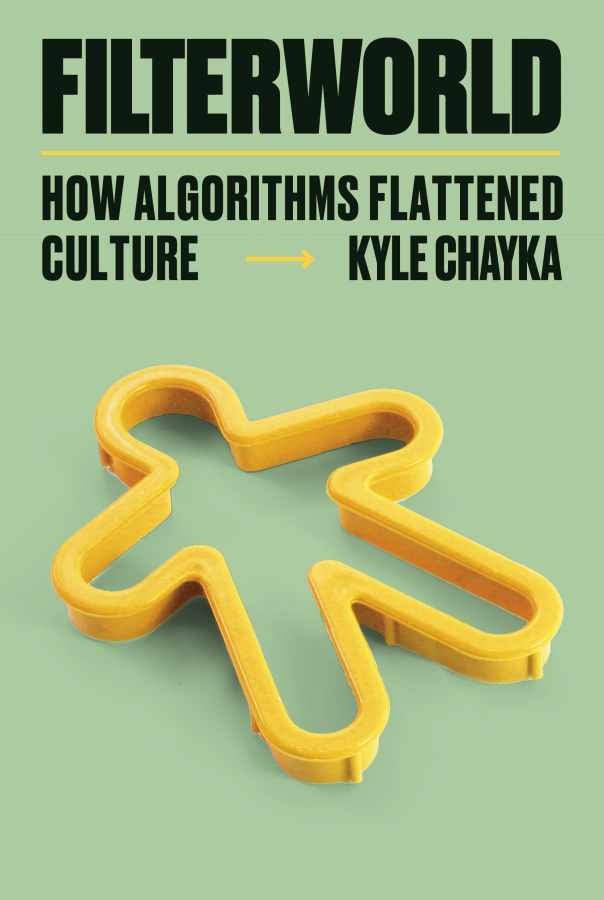above which the lotus, white nenuphar
Kannon, the mythologiesEzra Pound, Canto LXXXi
At the Irrawaddy Literary Festival in Mandalay in 2014, I attended an enthralling presentation by Rupert Arrowsmith about a little known manuscript in the oeuvre of the poet and literary theorist, William Empson. This manuscript, which had been lost for decades, had recently been found in the British Museum in a box given to the museum in 2003. It was among the papers of the literary figure Richard Marsh. How it came to be lost, and then inadvertently re-discovered is one of many intriguing aspects of Empson’s The Face of the Buddha, edited by Arrowsmith and recently published by Oxford University Press.
The Face of the Buddha consists of a comprehensive account of Buddhist statuary in Asia, and most significantly, the presentation of a theory of facial asymmetry, which ascribes intentionality to subtle differentiations in the depiction of the left and right sides of the face of some, but not all, Buddhas. After initiating his ideas in Japan, the formulation of the theory developed apace when Empson visited the fifth-century Yungang grotto in northern China. There he discerned an added human quality to the work:
A good deal of the startling and compelling quality of the Far Eastern Buddha heads come from their combining things that seem incompatible, especially a complete repose or detachment with an active power to help the worshipper. Now of course these qualities must somehow be diffused through the whole face, indeed the whole figure, or it will have no unity.
As Empson puts it, the portrayal of very similar asymmetrical features suggests that the artists ‘were working on theory’, and that the differing right and left sides of the face ‘appeared to suggest conflicting spiritual or emotional states’.
William Empson’s position as a Cambridge don, which had seemed secure after the reception of his influential tome, Seven Types of Ambiguity, came to a sudden halt when contraceptives were discovered in a drawer in his rooms in 1929. He was dismissed. His mentor I.A. Richards was able to recommend him for an appointment in Tokyo in 1931, and it was in Japan that his research into aspects of Buddhist sculpture began. This research was extraordinarily thorough, involving travel to museums and often remote Buddhist sites all over Asia. He even continued to do this when war threatened, returning to China to take up another academic position for the 1937-38 year as the Japanese advanced to Peking.
Sadly for Empson, the manuscript which had travelled with him as he revised and updated its contents, remained unpublished in his lifetime, due to an unfortunate chain of events. He had given his sole copy to a friend, John Davenport, who in a drunken state left it in a London taxi. Or so he thought. He had in fact given it to the poet Tambimuttu, then editor of Poetry London, who in turn had delivered it to his colleague, Richard March. With the manuscript still in limbo, March died. His papers were sent to the British Museum, where the manuscript came to light a few years ago. Although the theory of asymmetry in many ways goes to the heart of The Face of the Buddha, the research has connections, as Rupert Arrowsmith explains in his fine introduction, to aspects of Modernism through the writings of Ernest Fenellosa, Lawrence Binyon and significantly, Ezra Pound.
According to his friend, the poet Kathleen Raine, Empson had been interested in Buddhist sculpture before he left for Japan, but once there he began a systematic and detailed study. This study, and the development of the theory of asymmetry, involved travel to sites in Asia which were often difficult to access, requiring travel by train, bus and sometimes bullock cart over difficult roads, but he succeeded in viewing and photographing sculpture in Korea, China, Ceylon, Cambodia, Burma and India. Empson was adamant that he must see these works in situ, that they must be photographed and that this direct apprehension would form the basis of his thesis. The engagement with the world of Asia and this subject in particular was enthusiastically shared with others, who accompanied him on both longer and shorter local visits to museums and temples.
Arrowsmith gives a lively account of the chronological trajectory of Empson’s discovery, which adds a sense of immediacy to the travel and to the theory’s development. Vivid particulars are given of the sites and their varyingly degraded condition. For example in Japanese-occupied Korea, the coloniser’s policy of cultural erasure could be seen in the positioning of a neo-classical style Government House in front of the Gyeongbokgung palace, seriously compromising the view. Empson was however underwhelmed by the quality of the sculpture found there, but on visiting the nearby Doeksujung, he lavishes praise on a sixth-century Maitreya:
There is a life size bronze Maitreya [which is] a very fine creature in itself, and of interest for its likenesses to the greater sculpture accomplished in Japan…The hands have a remarkable quality which also reappears in early Japanese work … you begin to imagine what it would feel like to have those hands, and realise that if you saw them in a living creature it would affect you as divine.
In the wilds of Yungang in China rows of beheaded statues attested to illegal trade. Empson was there able to view the ‘heads hacked off for sale’ and take note of a general asymmetrical rule of their being ‘more slant on the right’. At the Ajanta Caves in India, which have a stylistic connection with later Far Eastern art, his ecstasy at the quality of the work was tempered by his awareness of how the frescoes had been sullied by poor restoration methods.
In The Face of the Buddha, Empson firstly provides a thorough historical survey of Buddhist art, and then proceeds to develop his theory of asymmetry with the fine attention to detail he had perfected with his method of close reading of literary texts seen in Seven Types of Ambiguity. As Partha Mitter observes in his preface to this book, ‘Rhetoric, semiotics, and the close reading of texts, pioneered by I.A. Richards and William Empson, stood in good stead in the latter’s comparative analysis of Buddhist iconography’. In developing his extensive commentary on the Buddha’s facial expression, his attention to minutiae in for instance the intricacies and variations of the eyes, eyebrows, nose mouth and smile, unfolds like a Proustian disquisition. Of a sculpture from Yungang he writes:
In the right hand face, as usual, the lines slant upwards from the centre; in the left hand face similar lines are horizontal or are made to seem so. This applies not only to the eye and mouth lines… but to the jowl and the line at the bottom of the nose. The inner eyebrow is perhaps actually steeper on the left, but it meets the nose at an angle; on the right there is a continuous strong curve from nose to brow which makes the slant more important. The left brow is slightly higher and has less hollow beneath it, which makes the face more passive and less protected. The bulge below the eyeslit, suggesting an eye, is nearer the nose in the left version, giving the squint of meditation; on the right is longer and more pronounced, giving a forward-looking eye that seems to wink.
This speculative journey has a personal dimension. Empson was not a trained scholar in this field, but was in many ways, as Arrowsmith reveals, a maverick, pursuing an individual line of enquiry with a deep reverence for the direct encounter. Thinking outside of the square was his stock in trade, but he remained hopeful that his theory would be accepted. Then, as now, opinion is divided.
Be that as it may, Empson’s achievement is exceptional. By combining both serendipity and strategy, he succeeded in producing a beautiful piece of reflective writing. As he surveys each selected site, he graces his observations with just the right note of humour. Of Yungang he writes:
… the novelty about the first Buddhas in China is that they have already a suggestion of ironical politeness and philosophical superiority. Delicious conversation pieces are found in progress between the reserved but winking figures, withdrawn like the classical Chinese poets from the vulgar herd rather than the world… I am not clear how far the work corresponded to a strong popular movement, but the idea of the Thousand Buddhas, which is carried out in several of the caves (a sheer wall of innumerable Buddhas like a wallpaper pattern, to show that the Buddha nature is omnipresent) was well suited to a mass religion; even a peasant could afford to sponsor one of these repeated objects, which would count as his own.
Empson’s investigation, however, was dictated not by chronology but opportunity. His journey begins, crucially, in Nara, and the two sculptures from the Horyu-ji temple to which he pays most attention, the Yumedono Kwannon and the Horyu-ji Kwannon, is where the Modernist connection comes in (The Japanese Kwannon and the Chinese Guanyin are cultural variations on the Bodhisattva of compassion, Avolokitesvara). The Yumedono Kwannon, known as the ‘Secret Buddha’ was wrapped in yards of cloth, locked away and rarely viewed. However, Fenellosa (whose study of Japanese art was a reference point) managed to secure a viewing in 1884, as did Empson on two occasions. In relation to the Kudara Kwannon, Lawrence Binyon, who had earlier visited some of the sites on Empson’s itinerary, included it in his famous lectures on Asian art held in the British Museum, which as Arrowsmith demonstrates, was the central location for the development of early Modernism. Some of Binyon’s lectures were attended by Ezra Pound (who remained a long-term friend) and it is quite likely to be the Kannon referred to in The Cantos. While Empson was able to refer to this sculpture as a basis for his general thesis that ‘the chief novelty of the far-eastern Buddhist sculpture, beyond what has been done in India and central Asia, is the use of asymmetry to make the face more human’, he was candid in admitting, so as ‘not to appear crazy over my facial theory,’ that the Yumedono Kwannon ‘seemed to me completely symmetrical on the two occasions I saw it.’ However, despite an early interest while at Cambridge in the translations of Arthur Waley, and sharing similar pursuits (and geographies) with some of these seminal figures, even consulting some of their accounts of the sculpture, Empson appears to have developed his study independently of them.
Despite his theoretical if not aesthetic disappointment with the Yumedono Kwannon, throughout his travels Empson found enough examples to develop his theory. Arrowsmith points out additional sources which could have bolstered his argument, such as the ambiguity integral to Noh masks, and works like the nineteenth-century Burmese sculpture the Jade Buddha, in white jadeite or marble, which was mostly hidden from sight in the Peking Empson visited in 1933. Of this work, Arrowsmith observes:
The face is particularly fine, and the fact that it seems to illustrate many points of Empson’s theories on asymmetry makes it incredibly unlikely that he saw it and then chose to leave it out of The Face of the Buddha. If one looks particularly at the eyes, one can see immediately that the pattern Empson perceived in the face of the Kudara Kannon at Horyu-ji is also here. The left side of the face has a level eye and an overall expression of detachment, while the incline in the angle of the other eye and the ‘Mona Lisa’ smile’ in the corner of the mouth make the right side of the face appear to engage sympathetically with the viewer.
In the account of his journeys, Empson’s lively prose is refreshingly free of colonial cant, and he speedily debunks generalisations which come out of this mindset, such as the scholar Geoffrey Gorer’s assertion that the artisans of the Angkor Bayon carved work (derided by him, but praised by Empson) which indicated they were ‘soaked in opium’. Of the French claim to have ‘discovered’ in Angkor ‘a lost city’, Empson observes:
The mystery of Angkor has perhaps been rather overdone. When the dying French explorer staggered through the jungle and discovered the lost city he found a community of Hinayana monks still in residence, though it hardly seems good taste to point that out.
He is also impatient with the Romantic trope extolling the magnificence of the intertwining of nature and sculptural ruin. Writing approvingly of restoration undertaken by French archaeologists, in a letter to Edith Sitwell in 1938 Empson writes:
The French have pulled down that beastly tree that destroyed Neak Pean, which everybody writes of so tenderly. Pray God they put the stones back now instead of saying how picturesque they look lying in a heap.
The Face of the Buddha provides the reader with the story of an extraordinary journey, in which as Arrowsmith puts it, the multiplicity of asymmetrical facial types ‘actively helped him form a way of thinking’ and equipped the writer with a means to identify the nature of a philosophical system which attracted him. As Arrowsmith writes, Empson’s account suggests that while Empson had made known his dislike of monotheistic religions, the absence of this feature in Buddhism may have been a contributing factor to his engagement, and to giving the impression that he was something of a ‘crypto Buddhist’.
The quest for the asymmetrical face suggests an apprehension of the transcendent, a search within the contours of the face for a mirrored identity. Asymmetry in Empson’s account radiates the very nature of human consciousness, and possibly confirmation of, or more likely a resonance of the writer’s own interiority. Interesting in this respect are Empson’s experiments in photography and the use of the mirror to pinpoint how a facial image may be perceived. Arrowsmith writes that Empson had, at the same time that he had begun the first draft of the Face of the Buddha
begun to experiment in the photographic darkroom, manipulating images of the faces of Buddhist sculptures in an attempt to better understand their asymmetries. The resultant images put particular sides of the faces together with their mirror images in order to produce what Empson called ‘left-left’ and right-right combinations … these photographic experiments allowed [him] to mentally reduce the faces of the sculptures he had seen at Nara, Seoul and Yungang into abstract patterns, converting them, in a very real sense, into the continuous elements of an obsessive geometric puzzle. Empson was, of course, tipped for a career as a mathematician before he chose instead to specialize in literary studies
If Empson’s relation to contemporary Modernist figures and creative method could be viewed as tangential, his quest has some parallels with that of the poet and explorer Victor Segalen and his frustrated search in China for the face of a Han warrior (see John Mateer’s 2013 essay ‘In the Chinese Mirror’). His 1912 collection Steles anticipates Pound’s Cantos in the use of text and Chinese characters, the significant difference being the collection was grounded in extensive travel, immediacy of experience, and fluency in the language. As Jamie James writes in his essay on Segalen, ‘The Empire of the Self’ (included in his recent book, The Glamour of Strangeness), Steles was ‘a bold experiment in pure cultural overlay, which attempted to coalesce Chinese and French sensibilities in a wholly original literary form.’ When James notes that for Segalen, ‘immersion in the Other was… a means of expanding the consciousness, amounting to an aesthetic path to enlightenment’, it is an observation that could be applied to Empson’s long-term substantial encounter with the face of the Buddha, and investigation of its ethereality.
This landmark edition of The Face of the Buddha is highly detailed and beautifully presented. It includes photographs taken by Empson, which were fortunately recovered with the original manuscript, plus a series of coloured plates. Arrowsmith’s finely written introduction complements Empson’s style in its mix of erudition and wit, and provides a compelling account of a unique journey which has its mirror in many others.
